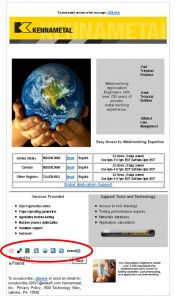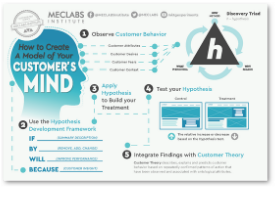B2B Marketers: Please Take our 2011 B2B Marketing Benchmark Survey
This week marks the launch of MarketingSherpa’s 2011 B2B Marketing Benchmark Survey, which gathers data from members of the B2B marketing community to benchmark their latest best practices, tactics and results.
If you’re involved in B2B marketing, please take the next 5 to 15 minutes to share data and insights:
Click here to take the survey now.
As a thank you for your participation, you will receive an offer for a free copy of the Executive Summary of the 2011 B2B Marketing Benchmark Report, which will include highlights and key findings from the study.
We’re excited to see how your responses illuminate what’s working in B2B marketing today. The B2B community has been humbled by the recent recession and has been forced to operate with limited resources — while producing a higher level of quality leads than ever before.
The organizations that have persevered through budget cuts and increased expectations are the ones that could apply the most efficient marketing tactics for every stage of the buying cycle — and in the process, improve the overall efficiency of their marketing and sales departments.
The greatest challenge for B2B marketers is generating high-quality leads to deliver to their sales teams. Because of this challenge, marketing automation, lead nurturing and lead scoring have become critical tactics for B2B organizations.
In order to optimize the efficiency of marketing and sales departments, walls between these teams are coming down to enable more collaboration. Sales and marketing are working together to identify various stages of the buying cycle for the complex sale, and to determine what marketing collateral or level of sales contact is appropriate for each stage. Through this process, marketing’s role has changed from just generating leads to generating and nurturing leads to the point that they are qualified, and ready for sales involvement.
The next year will be pivotal to the success of these organizations. With signs of an improving economy, the B2B marketing community is feeling more optimistic and reacting with the greatest budget increases we have seen since before the recession. It is critical that these organizations take the lessons they have learned during the recession and apply them efficiently with their now-increasing marketing budgets.
MarketingSherpa’s 2011 B2B Marketing Benchmark Survey will focus on organizations’ best practices, tactics and results in the key areas of marketing automation, lead nurturing, lead scoring and managing the complex sale.
Please feel free to tweet or post the following invitation:
B2B marketers share your insights. Take the 2011 B2B Marketing Benchmark Survey http://www.surveygizmo.com/s/341299/8gnpw @MarketingSherpa
Thank you!









